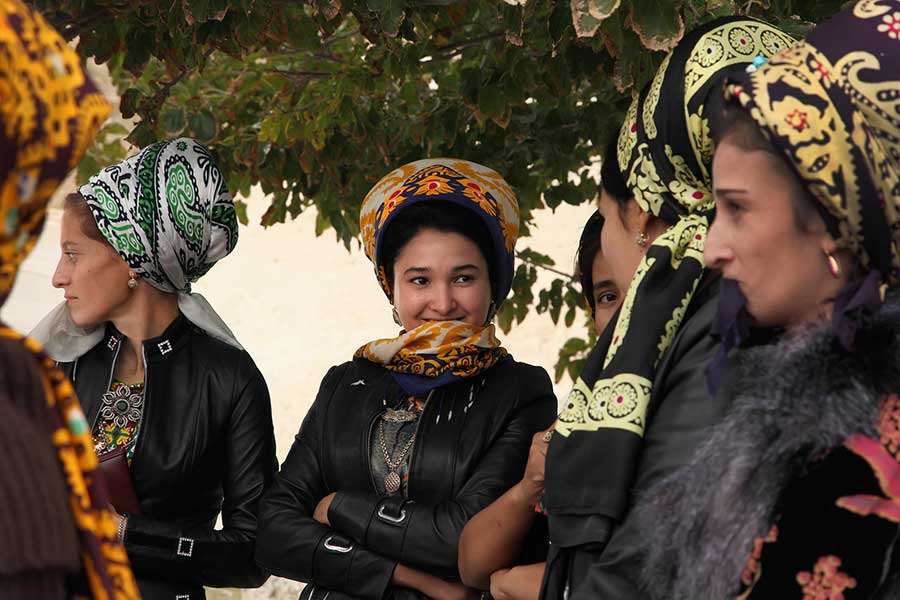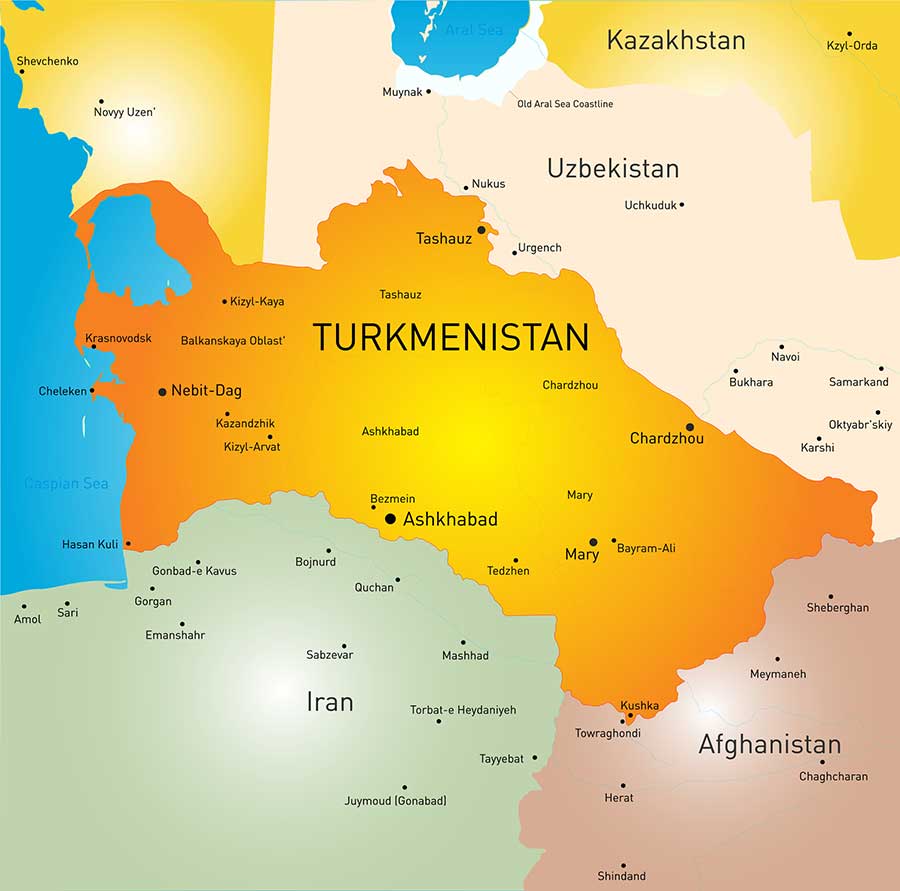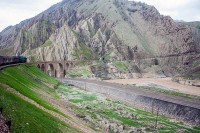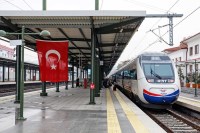Turkmenistan: Gradually Opening To The World Via Belt & Road Trade

By Chris Devonshire-Ellis
New infrastructure increasing national connectivity East and West
Turkmenistan in most regards has been closed off to the world. However, due to its need to see infrastructure and energy projects move ahead, the country is beginning to become more accessible, on a gradual, step by step basis. Curiously, it is the much-maligned Chinese Belt & Road Initiative and the welcoming trade embrace of Muslim China that has reached out to this strategically positioned Central Asia country of some six million people.
I first encountered a Turkmen businessman in 2011 while waiting for luggage to arrive at Urumqi International airport in Xinjiang Province. I had arrived from Hong Kong, he had arrived from Ashgabat, Turkmenistan’s capital city. We got talking while we waited. He had arrived to sell Islamic styled trinkets and jewelry to Uyghurs in Beijing’s Muslim quarter and intended to buy cheap Chinese electronic products to sell back in Turkmenistan. “We get it” he said “We learn Mandarin to deal with the Chinese here. Everywhere else in Central Asia we speak Russian. Deals are often done around our Mosque communities. Arabic we know from the Koran.”
Later, I was to meet him again two days later, puffing on Turkish cigarettes and enjoying a few glasses of Xinjiang red wine at one of Urumqi’s expatriate bars. He introduced a business partner of his, a mid-thirties Chinese trader from Qinghai, which also has a Muslim community. He wore a gold Rolex and showed me a photo of his wife, dressed in obviously expensive Italian brands.
This Chinese Muslim trader quoted Rumi poetry to me and discussed business with the man from Ashgabat in Urdu. It is a different set of trade and business dynamics. But it is this combination of trade and friendship that is filtering through and gradually persuading Turkmenistan’s Government that they should open, their country little by little. Their newly growing middle class are increasingly demanding they spread their wings and want peace, not conflict from neighboring Afghanistan.

To some extent, it doesn’t really matter that Turkmenistan is seen as a difficult place to do business for foreign investors. Why would they make it easy and let in trading competition? With just six million people, the country would be swamped. Traditional ways of life would disappear. The Turkmen are old school, deals are done on handshakes and on auspicious dates determined by the local Iman. There is no need for ‘Western values’ here, local friendships, family ties and blood carry far more importance than lawyers and contracts. The West looks at this and labels it ‘difficult’. It is not. It is just a different way of doing things, and my friend from Ashgabat views his commerce as normal and easy – once you know who you are dealing with, a process that can take time as friendships and trust needs to develop, a far cry from the West where deals are accompanied by lawyers and contracts.
They have plenty of time too – the devout pray five times a day. Try asking for that as an employment requirement from your Western boss.
Apart from the middle-class trade growth, Turkmenistan also needs China’s help to develop its infrastructure. It’s a huge country, yet the least regionally populated. Turkmenistan doesn’t have the capabilities of seeing many of its projects come to fruition on its own. That is why, in June 2016, Gurbanguly Berdimuhamedow, Turkmenistan’s president, approached Xi Jinping to discuss his desire to become more involved in the Belt and Road Initiative to see previously planned projects completed or expanded.
That was partially due to problems between Ashgabat and Moscow over Turkmenistan’s gas supplies; with Ashgabat wanting too high a price for a commodity that Russia already has vast quantities of. Turkmenistan pushed too far, and the deal was off, leading to a fiscal hole in revenues, and unfinished projects.
The Turkmenistan China Gas Pipeline

These unfinished projects included the Turkmenistan’s and China gas pipeline, which has four lines. Turkmenistan has the 4th largest proven natural gas reserves in the World, and this pipeline exports 30 billion cubic meters of natural gas every year to China, under a 30-year contract.
These pipelines run from the border between Turkmenistan and Uzbekistan, pass through Uzbekistan and Kazakhstan and link up with China’s West-to-East gas pipeline in Khorgos, Xinjiang, which ultimately connects as far east to supply Shanghai.
For China, these natural gas pipelines contribute to meet the demand of its growing market and support the gas-for-coal strategy adopted by China to reduce the country’s air pollution. By June 2019, Turkmenistan gas fields had delivered a total of 277.4 billion cubic meters of natural gas to China, benefiting over 500 million people in 27 provinces and regions in China. According to CNPC, daily imports of 39 million cubic meters of Turkmen gas cover one-third of China’s winter gas consumption, and cuts coal consumption by 63,000 tons per day – a large part of China’s greening of the Belt & Road Initiative. For Turkmenistan, exporting natural gas to China helps diversify its energy exports to the East.
The International North-South Transportation Corridor

The International North-South Transportation Corridor provides railway connections between Russia, Kazakhstan, Turkmenistan, and Iran, with another line connecting China to Iran via Kazakhstan and Turkmenistan, while also providing a shipping route to India, essentially re-establishing Turkmenistan-India trade for the first time since India’s partition in 1947.
Turkmenistan’s geographical location makes it one of the most important connection members and supporters of the INSTC, providing a China-Kazakhstan-Turkmenistan-Iran railway connection (approximately 10,400 km). This corridor will increase economic integration and cooperation between the participating countries of Russia, Iran, Turkmenistan, Kazakhstan, and China.
It is also strategically positioned and important for Russia and Iran, both of whom need to develop new markets in the wake of US sanctions. Although INSTC transport costs remain relatively high, this route is more time effective than maritime routes, taking an average 14 days to reach Tehran from Central China by rail, instead of 45-50 days by maritime shipping. It also provides alternative routes to markets as it is the first East Asia-South Asia first railway corridor. This will position Turkmenistan as a transit hub on the China-Azerbaijan–Europe corridor via the Turkmenbashi seaport. Along with the Persian Gulf, Chinese freight can also easily access to the Europe through this corridor.
Turkmenistan has also opened a smart new Caspian Sea Port on its west coast, the Turkmenbashi Port giving access to new markets West in Muslim friendly nations such as Azerbaijan and Turkey.
The Lapis Lazuli International Transit Corridor

The Lapis Lazuli International Transit Corridor, are road and rail routes connecting Afghanistan, Turkmenistan, Azerbaijan, Georgia, and Turkey – interconnecting with the BTK railway running from China to the Caucasus and onto the EU.
Turkmenistan has strongly supported the realization of the Lapis Lazuli international transit corridor, which aims to integrate Afghanistan back into global trade via links with the INSTC and BTK routes passing through Turkmenistan, Azerbaijan, Georgia, and Turkey. The corridor has been operational since 2018 and it has been playing a vital role in Afghanistan’s new economic growth. It is also a vital supply route for security access given the US and NATO military pull out from Afghanistan scheduled for September this year. Due to the connection between the Lapis Lazuli corridor and the North-South corridor in Turkmenistan, Afghanistan and China can also exchange more goods. This corridor’s contribution to the security of the region and development in the Afghanistan is part of a long-held China view that peace will return to Afghanistan if trade can be supported and developed throughout the region. The rail line is also planned to intersect with a Trans-Afghan railway connecting Uzbekistan to the north with Pakistan to the south and onto ports such as Gwadar on the Arabian Gulf.
The Turkmenistan-Afghanistan-Pakistan-India-Pipeline

The Turkmenistan-Afghanistan-Pakistan-India (TAPI) project is a natural gas pipeline being partly financed by the Asian Development Bank; this project is currently under construction in Turkmenistan. The aim of TAPI is to deliver 33 billion cubic meters of Turkmen natural gas per year, of which 5 billion cubic meters will be provided to Afghanistan and 14 billion cubic meters to each Pakistan and India.
Together with increased rail connectivity, importing 5 billion m3 of subsidized Turkmen gas per annum through TAPI will boost Afghanistan’s economy by creating opportunities for local businesses and new jobs. TAPI will not only boost Afghanistan’s current economic situation, but the project also unites all factional parties in the country under the same purpose. For instance, the Taliban have pledged cooperation with TAPI, which it said would be an important element in building up Afghanistan’s economic infrastructure. Therefore, the project is contributing to stability and peace within the region.
These corridors and infrastructure projects were planned before the launching of China’s Belt & Road Initiative and were originally regional projects with limited capacity and participation. Now, as part of the BRI, they have become a component of the global agenda for energy security and intercontinental corridors with accessibility to major transport networks.
But these energy projects and corridors will not be enough on their own to boost connectivity between the landlocked Central Asia region and global trade. The Belt & Road Initiative is also about decreasing artificial trade barriers to the flow of goods, services, capital, and knowledge across borders along the new Silk Roads. Turkmenistan’s next step will be to enter into free trade agreements, it is currently an observer state to the Eurasian Economic Union, which if it joined would give it free trade access to Armenia, Belarus, Kazakhstan, Kyrgyzstan, and Russia. The EAEU has existing FTA in place with Iran, Singapore and Vietnam, and deals pending with China and India. Should Ashgabat accept a new role as a transit hub for Central Asia, and be more accepting of at least some international protocols, then the future for the country could be very bright indeed.
Related Reading
About Us
Silk Road Briefing is written by Dezan Shira & Associates. The firm has 28 offices throughout Asia, and assists foreign investors into the region. For strategic advisory and business intelligence issues please contact the firm at silkroad@dezshira.com or visit www.dezshira.com





